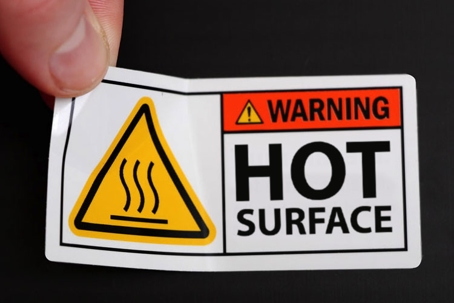In the realm of product liability law, marketing defects, also known as failure to warn claims, are among the most common types of claims brought against manufacturers and sellers. These claims assert that the product in question was sold without sufficient warnings or instructions about potential risks associated with its use. When consumers are not adequately informed about the dangers they might encounter while using a product, severe accidents or injuries can occur, leading to legal disputes and compensation claims. In such cases, warning labels play a pivotal role as critical pieces of evidence, shaping the outcome of product liability cases.
What are Warning Labels?
Warning labels, often referred to as product warnings or safety labels, are textual or graphical messages designed to inform consumers about potential hazards associated with a product's use. These labels aim to communicate the risks and provide instructions on how to use the product safely. They are typically found on a product's packaging, user manual, or directly on the product itself. Common examples include warnings on medications about possible side effects, cautionary labels on power tools, or advisories on hot beverages.
The Purpose of Warning Labels
The primary purpose of warning labels is to protect consumers from harm by providing them with vital safety information. By making consumers aware of potential risks associated with product use, manufacturers hope to reduce the likelihood of accidents and injuries. However, the efficacy of warning labels depends on their clarity, visibility, and the extent to which consumers heed the warnings.
The Legal Duty to Warn
Manufacturers and sellers have a legal duty to provide consumers with appropriate warnings and instructions regarding the safe use of their products. This duty extends not only to the foreseeable risks associated with the intended use of the product but also to the foreseeable risks arising from reasonably anticipated misuse. Anticipating how consumers might misuse a product is crucial in formulating effective warning labels to prevent injuries.
The Elements of a Failure to Warn Claim
To succeed in a failure to warn claim, the injured party, known as the plaintiff, typically needs to establish three main elements:
- Foreseeability: The plaintiff must demonstrate that the manufacturer or seller should have reasonably foreseen the potential risks associated with the product's use or misuse. This involves showing that the risk was known or knowable at the time the product was released into the market.
- Inadequate Warning: The plaintiff must show that the warnings provided were insufficient, inaccurate, or misleading. If the warning labels are present but fail to convey the severity or nature of the risks, they may be considered inadequate.
- Causation: The plaintiff must establish a direct link between the lack of adequate warnings and the injuries or damages suffered. They need to show that if proper warnings had been given, they would have used the product differently and avoided harm.
The Effectiveness of Warning Labels in Litigation
When evaluating product liability claims based on marketing defects, courts consider several factors regarding warning labels:
- Visibility and Clarity: The warning label must be easy to notice and understand. If the warning is buried in fine print or written in complex language, it may not be deemed sufficient.
- Specificity: The warning should be specific about the potential risks and provide clear instructions on how to avoid them. Generic warnings may not be effective in protecting consumers.
- Conspicuousness: The warning label should be placed where users are likely to see it. For example, on a power tool, the label should be on the tool itself, not just on the packaging.
- Consistency with Industry Standards: Manufacturers are expected to adhere to industry standards for warning labels. Failure to meet these standards may be seen as negligence.
- Anticipation of Misuse: Manufacturers should anticipate how consumers might misuse the product and provide warnings accordingly. If misuse is foreseeable and not warned against, it may be considered a failure to warn.
Warning labels are a critical aspect of product safety and liability. They serve to protect consumers by providing vital information about potential risks associated with product use. In product liability cases, the effectiveness of warning labels can make a significant difference in determining whether a manufacturer or seller can be held liable for injuries caused by their product. As consumers, it is essential to read and heed warning labels to ensure our safety when using products. Manufacturers, on the other hand, should prioritize the clarity, visibility, and specificity of their warning labels to fulfill their duty to protect consumers from harm.
At Shoop | A Professional Law Corporation, we specialize in handling product liability cases nationwide. Our experienced attorneys can assist you in navigating the complexities of these cases, ensuring you receive the compensation you deserve.
Contact us today to learn more about our services.

